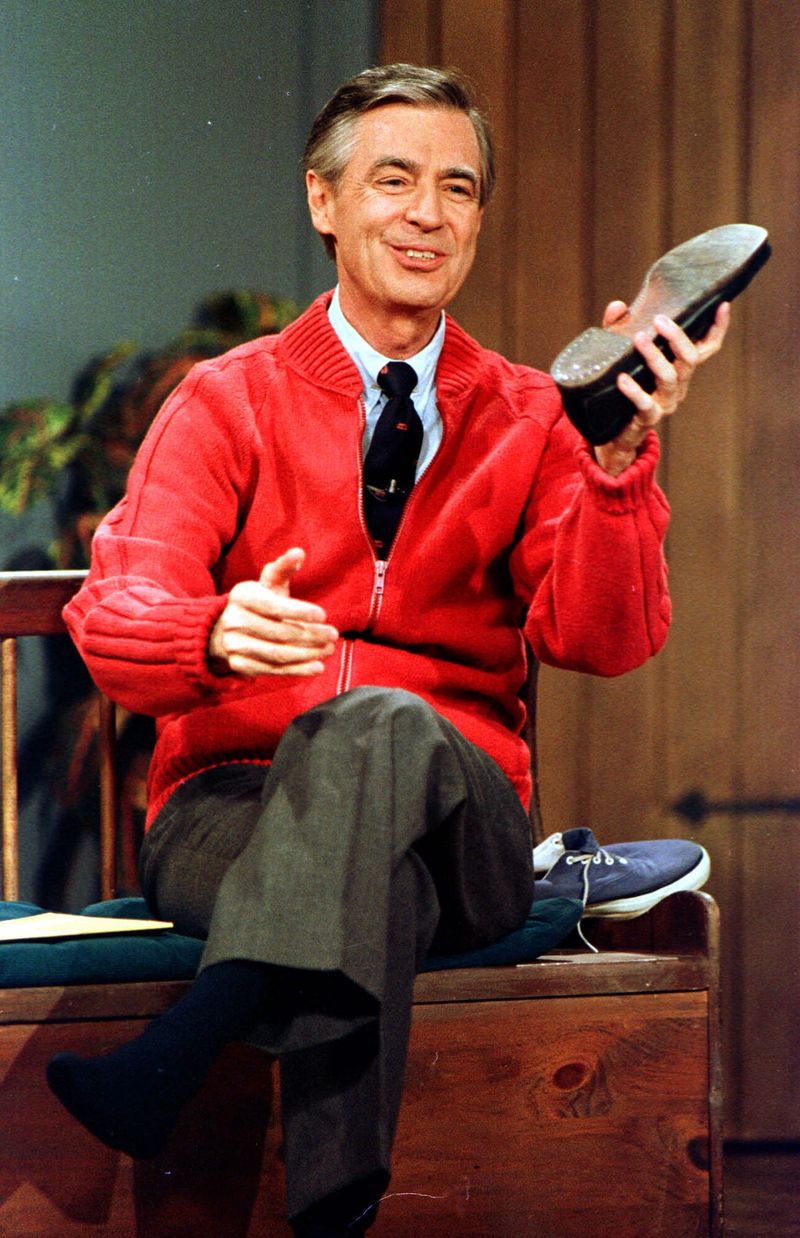
After Growing Up Watching Children’s Television Shows, Endeavor Schools Teachers Now Make Their Own
Teachers across the Endeavor Schools network are creating dozens of videos each day to provide high-quality educational content for children doing remote learning. As our teachers engage with students online through live streams and pre-recorded videos, many of them have been thinking about the shows they watched as children, such as Mr. Rogers’ Neighborhood and Sesame Street, when making their own videos.
When people started wearing masks on a regular basis to help stop the spread of coronavirus, Erin McFarland, a teacher at Step by Step Montessori in Edina, Minnesota, was worried her students would be confused and frightened by the rapid changes happening around them. And as a lifelong fan of Mr. Rogers, she decided to channel the legendary children’s television host and explain to them honestly and carefully about the importance of the masks and that they have no reason to fear them.
Sitting by herself at her school on a Sunday afternoon in early April, Erin turned on her camera, put on her mask, and, in a calm and clear voice, showed that the masks were not to be feared.
“See my eyes? I’m smiling behind the mask,” Erin says in the video.
Since creating that video, Erin, who is a Montessorian and brand-new to the world of remote learning, has since made dozens more videos for her students. Each time she makes them, she tries to incorporate what she liked about the man who created one of the most iconic children’s television shows in American history.
“I was one of those people who was raised on Mr. Rogers’ Neighborhood,” Erin said. “Mr. Rogers just has this calmness about him. And he uses routine on his show, such as singing the song, changing into the cardigan, changing his shoes, and so on. Kids really love repetition, routine, and normalcy. So, incorporating that, as well as his laid-back demeanor, is something I’m trying to do.”
Recreating the Classroom Experience
Aiden Huckestein, a teacher at Creative Child Learning Center in Tallahassee, Florida, said watching Sesame Street as a child has influenced the videos she is making today.
“You can almost see the passion and excitement of what they’re talking about on Sesame Street and that can make kids feel the same way, which makes them more excited to learn,” Aiden said.
In addition to captivating a child’s attention, Huckestein said she learned a great deal about timing and interaction techniques from watching various children’s television shows. Like many teachers, she had not made videos for remote learning before the coronavirus pandemic. Watching children’s television shows helped her understand techniques like making eye contact and pausing briefly after asking a question to allow children to process and answer so they can participate in the lesson.
“Seeing how they did these little things enabled me to grasp those techniques quicker and improve my videos,” Huckestein said. “You try to recreate as much as possible the classroom experience and these are things you would do in person.”
Recreating the classroom experience is a top goal for Endeavor Schools teachers.
When Beth Hughes, a toddler teacher Prep Academy in Dublin, Ohio, was told that she must create multiple educational videos each day, she was not sure her technological skills were up to task.
“I don’t even really take selfies,” Hughes said with a laugh.
Nonetheless, she adapted quickly and was soon making several videos per day, including editing out mistakes. But by editing out mistakes, Hughes realized she was depriving students of an important life lesson: It is okay to make mistakes sometimes.
Learning to Solve Problems
“We all make mistakes. But if children don’t ever see teachers make mistakes, they will see their own mistakes as a big problem, rather than something they can resolve,” Hughes said.
In one video where Hughes gave a counting lesson using grapes, the round fruits would slightly roll of when she lifted the surface she was working on for the camera. But instead of discarding the video, Hughes use the opportunity to show students that all you had to do was put the grapes back where they belong and you still had the correct number in the appropriate slots.
“When I’m in a classroom, I can’t hide when I make a mistake. And when I do, children can see me fix it and find a solution. So why shouldn’t I do that while presenting a video?”
Hughes said her mother was careful not to let her children watch just anything on television. In fact, just about the only show she could watch as a small child was Mr. Rogers, who won her mother’s approval because of the slow, methodical approach he demonstrated on television.
Turns out, that’s something Hughes has striven for in her videos, as well, because working through and solving problems is a skill that she wants her students to develop.
“Looking, observing, and trying are things Mr. Rogers would do on his show in a way that let children process and understand new ideas,” Hughes said. “Making mistakes and learning how to work our way through is part of growing up for a child.”
In some ways, early children’s education shows like Mr. Rogers and Sesame Street were the pioneers of remote learning. And today’s children are being taught by teachers who grew up watching the first shows that provided children’s education via video.
However, a major difference is that Endeavor Schools teachers know their students personally and are providing new content each day and maintaining a special bond that will continue as soon as children can come back to the classroom.
“Having personal videos from the teachers is really beneficial and it extends the relationship,” said McFarland. “We are continuing our friendship over video.”
